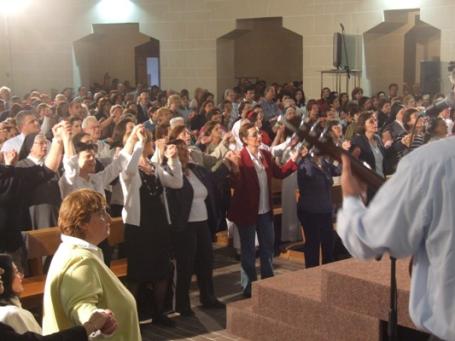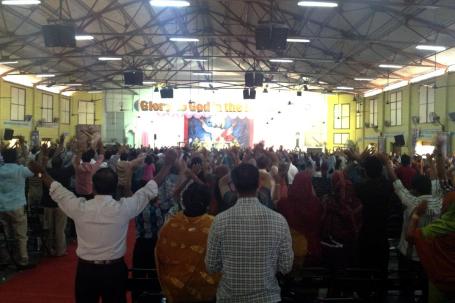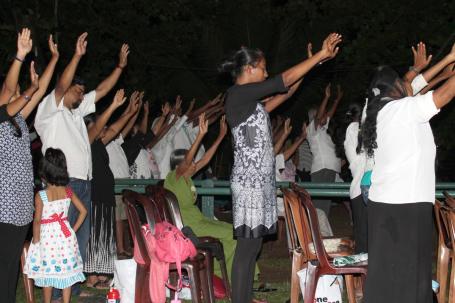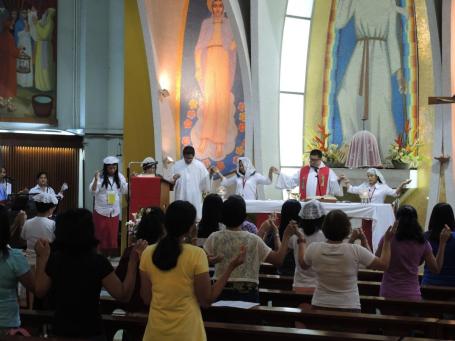Thomas J. Csordas, Language, Charisma, and Creativity: Ritual Life in the Charismatic Renewal (2012), Preface, Chapters 3 and 4
Reading Thomas Csordas’ book, Language, Charisma, and Creativity: The Ritual Life of a Religious Movement1 prompted the most frankly judgmental responses from my students to date. The reading assignment featured practices associated with the Catholic Charismatic Renewal: among them, speaking in tongues, prophecy, and casting out demons. Students’ reactions ranged from restrained to fervent, but they were generally negative. Some commented that these Catholics seemed funny and strange. Others felt that these practices were unhealthy and theologically wrong from a Catholic perspective. I was initially confused by these comments; my students had been able to easily embrace a non-judgmental viewpoint in earlier class sessions. Since then I’ve been able to organize my thoughts about what it was about the CCR that helped spark these reactions. One thing has stuck with me: for the first time this semester, we were reading about people whose social profile closely resembled the profile of the majority of my students.
The books and articles we’ve read to this point featured people whose approach to culture and Catholicism was different from that of my most of my students. For instance, we spent some time discussing John Burdick’s chapter about Brazilians’ nuanced use of ethnic and racial identifications in Blessed Anastacia. For some of my students, the flexible use and situated meanings of various racial categories was quite unfamiliar. The way Burdick’s book is structured—introducing these categories in an early chapter—as well my decision to begin by teaching this material as important contextualizing information highlighted the unfamiliarity of this approach to culture and Catholicism. Our first step was to talk about the aspects of urban Brazilian Catholicism that would sound unfamiliar to those who might take contemporary American social conditions and practices around race to be the norm.
Thomas Csordas’ Catholic Charismatic Renewalists, in contrast, started off looking just like some of my students. This point was driven home for me when, after class, I re-read a portion of the assignment from Language, Charisma, and Creativity. At the beginning of Chapter 2, Csordas writes about “a critical moment.” He depicts a car ride with acquaintances, traveling from a college campus to a suburban midwestern church for a prayer meeting. He was sitting in the back and, on the way as they were pulling up to a stoplight, a pre-med student at the wheel began to speak in tongues. Csordas admits to feeling vulnerable: Will the driver lose control of the car, he asks himself nervously? This startling experience, Csordas writes, prompted his lifelong interest in Charismatic forms of Christianity.
What hit me was how banal this experience would have been for many of my students, save for the glossolalia. Driving around suburbs and visiting friends at other college campuses is something my students do all the time. Some of them are even interested in medical school like Csordas’ tongue-speaking acquaintance. Actually, Csordas talks about how this paradox—the strangely familiar, the familiarly strange—is what makes the CCR theoretically compelling. The book’s dust jacket sets the reader up to grapple with this problem: “This book shows that people who might be regarded by some as ‘religious weirdos’ are quite comprehensible in terms of contemporary culture, while at the same time these people who could be anyone’s neighbors in fact inhabit a profoundly distinct world of experience.” I think my students’ comments about the intimacy that Charismatic Renewalists seek out in their relationships with Jesus reflected a sense of “shock” or “surprise” that their Catholic neighbors—people just like them and maybe even their own friends and relatives—might live in profoundly different everyday worlds. As Csordas himself found, this realization sometimes comes along with risks that might leave one feeling uncomfortable and in need of distancing gestures to tame this feeling.
- 1I assigned the first edition (1997) because there is a free online version. The book was reissued in 2012 as Language, Charisma, and Creativity: Ritual Life in the Catholic Charismatic Renewal.



